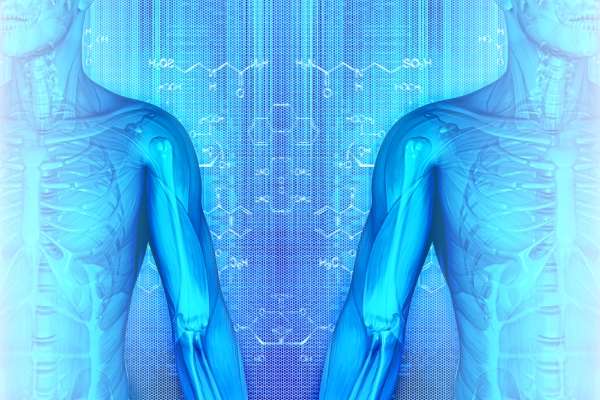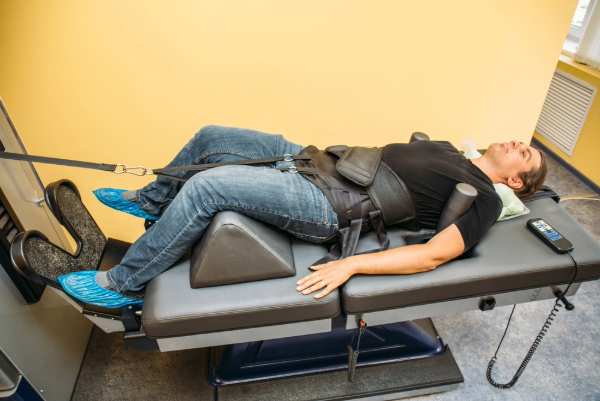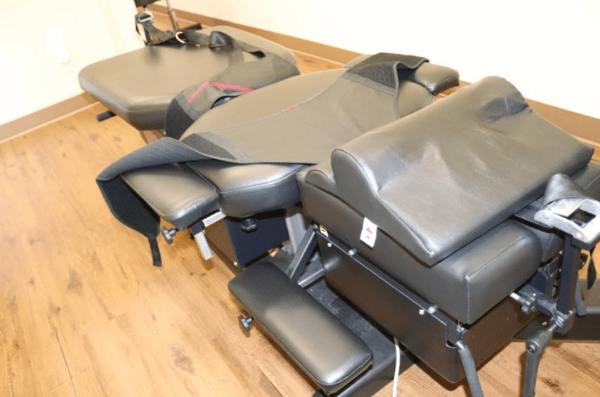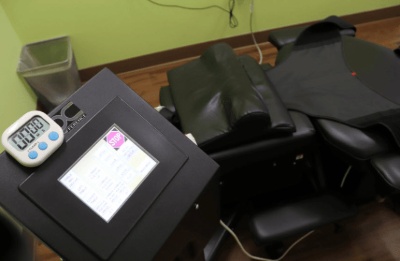
Benefits of Neck Decompression Therapy Explained
Chronic neck pain can feel like a life sentence. It disrupts your work, sleep, and even simple pleasures like playing with your grandkids or hitting the golf course. You’ve tried everything – chiropractic adjustments, massage, physical therapy, even injections. But the relief is fleeting, and the pain keeps coming back – enter neck decompression therapy.
This non-surgical treatment is gaining traction among health-conscious individuals seeking long-term relief from neck pain. It’s a game-changer for those dealing with conditions like disc herniation, degeneration, sciatica, or postural stress.
But what exactly is neck decompression therapy? How does it work, and what benefits can you expect?
In this article, we will explain neck decompression therapy. We will discuss its benefits and how it might help you. We will also cover common questions, like possible side effects and the need to find a qualified provider.
Understanding Neck Decompression Therapy
Neck decompression therapy is a straightforward concept with powerful results. It’s a non-surgical approach aimed at alleviating pain by addressing its root cause: spinal pressure. Imagine a gentle stretch for your spine – that’s the foundation of this therapy.
The primary goal is to create negative pressure within the cervical spine. This pressure change encourages herniated or bulging discs to retract, which alleviates pain by reducing nerve compression.
Consider the spine as a stack of blocks. Over time, daily stress can misalign them. Neck decompression acts like a reset, helping realign your spinal ‘blocks’. This therapy is particularly beneficial for those grappling with pain from conditions like herniated discs, degenerative disc disease, or sciatica.
Key aspects of neck decompression therapy include:
- Gentle spinal stretching
- Reduction of spinal pressure
- Promotion of healing and pain relief
Notably, this therapy improves nutrient and oxygen flow to spinal discs, promoting healing and reducing inflammation. It’s a holistic approach, tailored to each individual’s needs.
Before starting treatment, a thorough diagnosis is crucial to ensure it’s the right fit. Always consult with a neck decompression chiropractor or therapist experienced in cervical decompression therapy.
What is Neck Decompression Therapy?
Neck decompression therapy targets the cervical spine with a gentle, non-invasive technique. The therapy primarily involves careful spinal stretching to improve alignment. By decompressing the neck area, it aims to relieve tension and reduce pressure on nerves. This approach is designed to provide relief without the need for surgery or medication.
How Does Neck Decompression Therapy Work?
The process is simple but effective. The therapy gently stretches the spine, creating negative pressure. This pressure helps pull discs back into their correct position. It reduces pressure on nerves, which can ease pain. It also improves blood flow and nutrient exchange. As the spine stretches, blood and nutrients can move more easily, helping with healing.
Typically, a session lasts 15-30 minutes. Over weeks, you’ll see cumulative benefits, with reduced discomfort and increased mobility.
A personalized approach is integral to success. Your Doctor will adjust the treatment to best fit your unique condition, enhancing outcomes and ensuring comfort. Neck decompression therapy represents a paradigm shift, offering an alternative path to wellness that’s as effective as it is straightforward.
Conditions Treated by Neck Decompression Therapy
Neck decompression therapy can help with many different problems. It’s especially good for people who have ongoing neck pain. If you have severe neck pain, this therapy might help you feel better. It is effective for conditions like herniated and bulging discs, which can happen due to normal aging or sudden injuries.
Here are the key conditions that benefit from neck decompression therapy:
- Herniated and bulging discs
- Degenerative disc disease
- Sciatica and neck-related pain
Degenerative disc disease is a common condition that we treat. It happens mainly due to the slow loss of fluid and structure in the discs over time. This therapy can help slow the condition down and ease the pain.
We also help with sciatica and different types of neck pain. Many people find relief as the therapy enhances nerve function and reduces inflammation in the affected areas.
Herniated and Bulging Discs
Herniated discs occur when the soft interior of a spinal disc pushes through its outer layer. This can compress nearby nerves, causing pain. Neck decompression treatment helps by gently adjusting the spine, allowing discs to retract. This reduces nerve pressure and provides symptomatic relief, helping you regain normal function.
Degenerative Disc Disease
Degenerative disc disease is a natural part of aging for many. Over time, spinal discs lose flexibility and hydration, causing discomfort.
Neck decompression therapy aims to mitigate these effects. By increasing space between vertebrae, it facilitates better disc health and eases associated symptoms, promoting greater comfort.
Sciatica and Neck Pain
Sciatica can arise from pinched nerves in the lower back and neck, radiating down the leg. It’s notoriously painful and disruptive.
Neck decompression therapy offers relief by reducing the pressure on affected nerves. Improved blood flow and reduced inflammation offer significant symptom reduction, enhancing quality of life.
The Benefits of Neck Decompression Therapy
Neck decompression therapy has many benefits. Many patients feel less pain after starting the treatment. This therapy not only reduces pain but also addresses its main causes. Another benefit is better mobility. When pressure on the spine is reduced, it is easier to move your neck and body. This can greatly improve daily activities and overall health.
Here’s how neck decompression therapy can help:
- Pain relief and increased mobility
- Long-term relief from chronic pain
- Reduced need for medication
- Avoidance of invasive surgeries
- Improved blood flow and oxygen to discs
- Enhanced overall spine health
Therapy often reduces or removes the need for pain medication. Patients rely less on drugs for relief, which lowers the risk of side effects from using medicine for a long time. Also, neck decompression therapy can help avoid the need for surgery. Many patients worry about surgery, and this non-surgical option gives them comfort along with good results. Finally, the therapy improves spine health by increasing blood and oxygen flow to the discs. This helps healing and supports long-term spine health, making it a great choice for managing neck pain.
Pain Relief and Increased Mobility
One main benefit is pain relief. By easing pressure on spinal nerves, the therapy quickly reduces pain. Many patients notice a significant improvement in their range of motion. As pain decreases, everyday tasks, like turning your head or lifting things, become easier. This increased mobility can greatly improve your quality of life, allowing you to go through your day with less discomfort and more freedom.
Long-Term Relief and Avoidance of Surgery
Neck decompression offers lasting pain relief by addressing the root causes of discomfort instead of just hiding the symptoms. One key benefit is that it avoids surgery, which many patients are understandably hesitant about. This safe, non-surgical option allows individuals to enjoy their favorite activities again. Whether it’s golfing, traveling, or spending time with grandchildren, life can resume without the fear of surgery.
Choosing the Right Provider for Neck Decompression Therapy
Selecting the right provider is critical for effective neck decompression therapy. A competent practitioner ensures that the therapy addresses your specific needs and conditions effectively. This personalized approach can lead to better, long-term outcomes for your neck health.
Experience in cervical decompression treatment is vital. A skilled provider can tailor therapy to maximize benefits while minimizing potential side effects. This expertise is key to your success with the therapy.
Qualifications and Experience
Look for a chiropractor who is certified and has a lot of experience. A neck decompression chiropractor with these qualifications can handle difficult cases. This helps lower the chances of problems and boosts your chances of healing. Also, check for reviews or testimonials. Good feedback from past patients can help you feel more confident in the provider’s skills and methods.
Potential Side Effects and How to Manage Them
While neck decompression therapy is generally safe, some side effects might occur. Understanding these potential issues helps in managing them effectively. Most people find the benefits far outweigh any temporary discomforts.
Communicating openly with your provider about any side effects is crucial. They can adjust treatment to fit your needs better. Addressing concerns promptly ensures a smoother therapy experience.
Adjustments in your therapy sessions may alleviate discomfort. Regular feedback to your chiropractor can lead to improved comfort and effectiveness in each session.
Common Side Effects
During or after treatment, some patients experience temporary discomfort. This may include muscle spasms or a mild stretching sensation. It’s typically short-lived and manageable.
Your provider will monitor these sensations closely. Discuss any prolonged discomfort with them to ensure optimal treatment adjustments.
Real Stories: Success with Neck Decompression Therapy
Hearing from others who have found relief can be inspiring. Many patients experience significant improvements with neck decompression therapy. Their stories highlight the potential for long-term relief.
These real-life accounts reveal more than just symptom relief. They showcase a return to a more active and fulfilling lifestyle. Personal testimonies underscore the therapy’s power in a practical, heartfelt way.
Conclusion and Next Steps
Neck decompression therapy offers a promising path for those seeking relief. It’s an approach rooted in evidence and practice, aiming for holistic wellness. This therapy can provide a significant reduction in pain and improved quality of life.
To begin your journey, consult a qualified specialist. Explore personalized treatment plans that align with your unique needs. Taking the first step towards this non-invasive therapy could lead to a life with less pain and more freedom.





